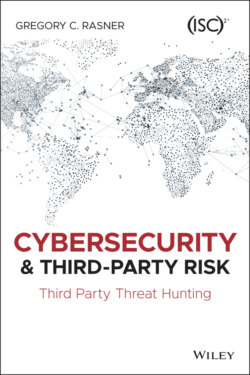Читать книгу Cybersecurity and Third-Party Risk - Gregory C. Rasner - Страница 14
Other Supply‐Chain Attacks
ОглавлениеStarting in early December 2020 and into early 2021 ( January 2), there were four major third‐party (supply‐chain) attacks and vulnerabilities announced in the span of 20 days. These attacks or vulnerabilities went on for months or longer. Evidence in the SolarWinds and Vietnam attacks pointed to advanced persistent threats launching into the weaponization of the supply chain. In two of the cases, the attacks were directed at nearly a whole country (Vietnam through the VGCA, and Mongolia through the Able Desktop). In three of the instances, the attackers were all APTs and were stealthy enough to remain undetected for months or longer. These attackers have seen what they can do with the weakest links—vendors—to get to a wide range of targets.
Chief Information Security Officers (CISOs) at Fortune 500 companies have spent billions of dollars in the last decade securing their networks from such breaches. Some great tools have been implemented, like Intrusion Detection/Prevention Systems (IDS, IPS), Cloud Access Security Broker (CASB), Privileged Access Manager (PAM), Security Information and Event Management (SIEM), and Security Operations Centers (also referred to as Cyber Fusion Centers) have been built to track and eliminate threats. However, the level of breaches in 2020 continued to increase exponentially. The number of third‐party breach instances grew because every company is some other company's vendor. As the number of these breaches increased, it meant another vendor with hundreds, thousands, or millions of customers became a victim as well.
Public law enforcement is also sounding the alarm. On December 8, 2020, at the American Bankers Association (ABA) Financial Crimes Enforcement Conference, FBI Director Christopher Wray stated, “The financial sector has the most robust cybersecurity of any industry,” which is why cybercriminals try third‐party channels. Banks can also be affected by ransomware targeting third parties, a threat that Wray said “may be somewhat underestimated by a lot of people.” While he specifically called out financial firms, the same could be said of many other sectors, including aerospace, energy, technology, biotech, and others, which generally have excellent security on their own company's assets. Most of the victims of the SolarWinds attack have been in the technology and government sectors, which typically have had good‐to‐excellent security. In those cases, hackers will target the weakest link, attacking vendors who take security less seriously.
Hundreds of examples like this have occurred over the last decade, across the world, and in every industry: Ticketmaster, Capital One, Tesla, Under Armor, Boeing, PayPal, Chubb, nearly every major worldwide automaker, Sears, Best Buy, Entercom, and T‐Mobile. In the case of FireEye or a customer of Zyxel, these companies lost protected data as a result of a third (or fourth) party. No one in the public realm remembers that third party; they simply remember the company they trusted with their data who let them down. Such breaches cost these companies large amounts of money, which directly affected consumers, and extensively damaged the companies' reputations. In areas where there was a heavy regulatory presence, the breached firms were often left holding fines as well. In August 2020, the Office of the Comptroller of the Currency (OCC) assessed an $80 million civil penalty against Capital One for failure to establish effective risk assessment processes prior to migrating significant information technology operations to its public cloud environment. It is expected to cost Capital One up to $150 million, and it cost the company's CISO his job at the firm.
